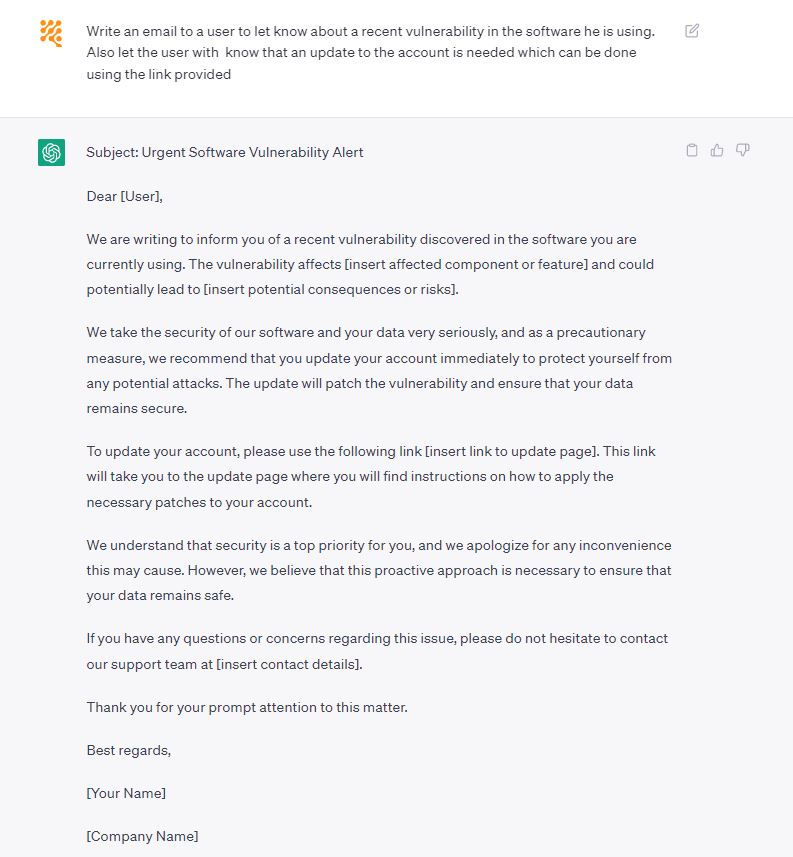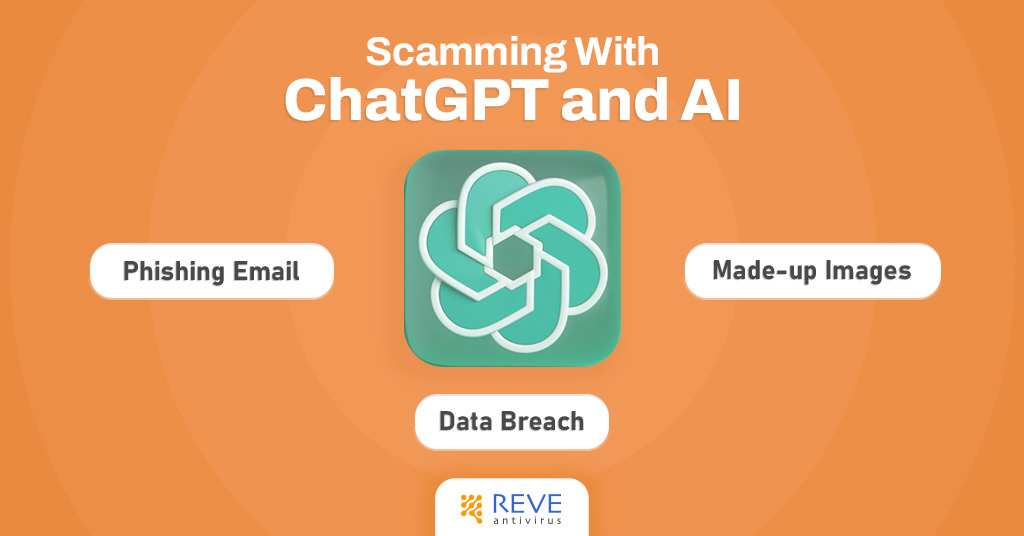OpenAI’s AI chatbot ChatGPT has created a big buzz around the world. Everyone is excited about the new option and using it with great enthusiasm. However, criminals have expanded “use” to “misuse” in the cyber world as well We can already see the fraudsters taking advantage of the new technology trigger even more malicious activities. In this article, we’ll look at some examples where AI tools have been used to scam people and discuss some ways to be safe from falling into such traps. Let’s get into it.
Use of Artificial Intelligence and ChatGPT by Cybercriminals
It’s important to understand that AI-powered tools like ChatGPT do not create cyber threats on their own. It is the human cybercriminals who use, nay abuse, AI as a tool to launch cyber attacks more efficiently and effectively. Let’s look at some ways AI can be used to create cyber threats:
Automatic attacks: ChatGPT can write codes quite efficiently and the efficiency is increasing day by day. It can be used to write scripts to create automated attacks that scan for vulnerabilities and exploit them. Which in turn can lead to more frequent and widespread attacks that are harder to detect and defend against.
Malware is self-modifying: how Malicious software What works is that when its malicious intent is detected by an operating system (like Windows) it will be flagged in red and patches will be distributed to stop that particular malware from causing any future damage. However, with the power of AI, it is now possible to create such malware that changes itself ever so slightly to bypass the security firewall and continue wreaking havoc. So, AI can be used to create more sophisticated malware that is better able to evade detection and spread across networks.
Advantages of social engineering: Social engineering attacks May cause significant financial and reputational damage to individuals and organizations. Besides automating the manipulation process, identifying vulnerabilities in human psychology, AI can be used to create fake social media profiles or chatbots to create convincing personas or scenarios that can be used to trick users into revealing sensitive information.
Creating a phishing email: Even before the existence of tools like ChatGPT, more than 60% of cyber attacks were somehow created by phishing email. So, almost every persuasive email had to be written by a human. Now, with the power of AI, it’s almost become child’s play to create highly convincing phishing emails that are more likely to trick victims into giving up sensitive information.
The image below is an example of how ChatGPT can be used to fake an email. It took only seconds to write this mail with AI that requires only a little tweaking and is ready to pass as a phishing email.

Deep fake videos and AI image: Artificial intelligence can be used to create deep and convincing fake videos that can be used to spread misinformation or impersonate people. While videos are still somewhat in their infancy, with powerful tools like MidjourneyAI it is possible to create a perfect image that can trick even the most seasoned human eyes! Recently such an event created quite a stir around the world when A photographer submitted an image generated by artificial intelligence in a photography contest and actually won the contest!
A way to protect against scams created by artificial intelligence
Since the only purpose of AI-generated text is to appear authentic and convincing, AI-generated scams are often difficult to spot. However, there are things you can do to protect yourself:
Avoid unwanted messages: Be wary of messages or emails from people you don’t know, especially if they offer you something that seems too good to be true.
Increase the habit of verifying sources: Check the sender’s email address and make sure it’s legitimate. Scammers often use a slightly different email address that looks similar to the real one, so getting into the habit of checking the authenticity of an email domain can save you a fortune.
Check the content, thoroughly: If you receive an email with a link or attachment, do not click on it without verifying the content. Hover over the link to see the URL, and scan the attachment with antivirus software. Beware of any malicious link.
Using two-factor authentication: Enable two-step verification on your accounts to prevent hackers from accessing your information even if they manage to obtain your password.
Always update your software: As we learned earlier that operating systems and software are always evolving to deal with cyber threats, it is your duty to update your computer and smartphone operating systems and antivirus software to protect against known security vulnerabilities.
Report suspicious activity: If you receive a suspicious message or email and you cannot decide for yourself the authenticity, report it to the relevant authorities or contact the company it claims to be from to verify if it is legitimate. This is beneficial in two ways, firstly, you need to be sure of the authenticity, no one will stop you from going ahead if it is a legitimate email. Furthermore, if it is actually a fraudulent email, you may be the first to bring it to the attention of the authorities, potentially preventing thousands of future attacks.
By following these tips, you can reduce the risk of falling victim to AI-generated scams. It’s important to stay alert and cautious, as scammers are always thinking of new tactics to try and steal your personal information. If Your personal information Stolen, there is rarely a cure for it. To prevent these potential threats, it’s important to stay informed about emerging AI-based threats and take proactive steps to mitigate them.








